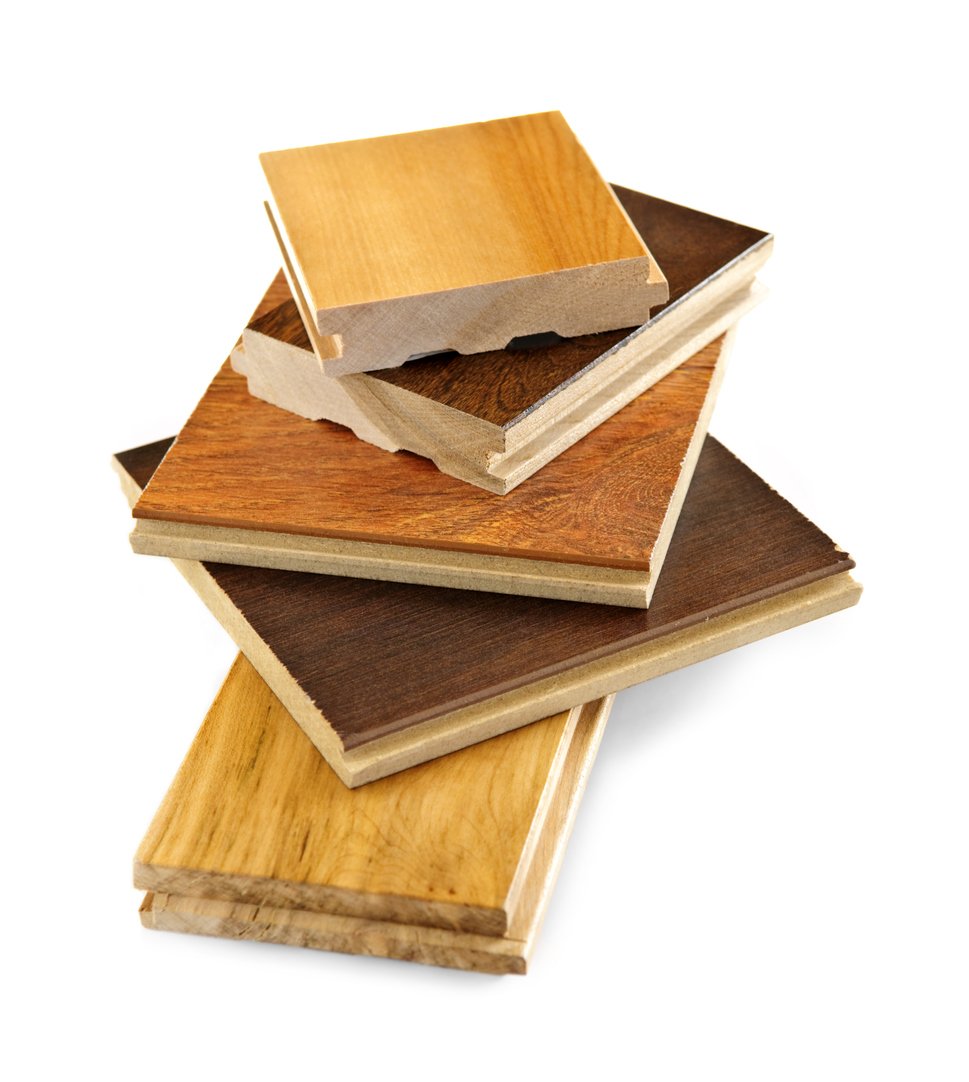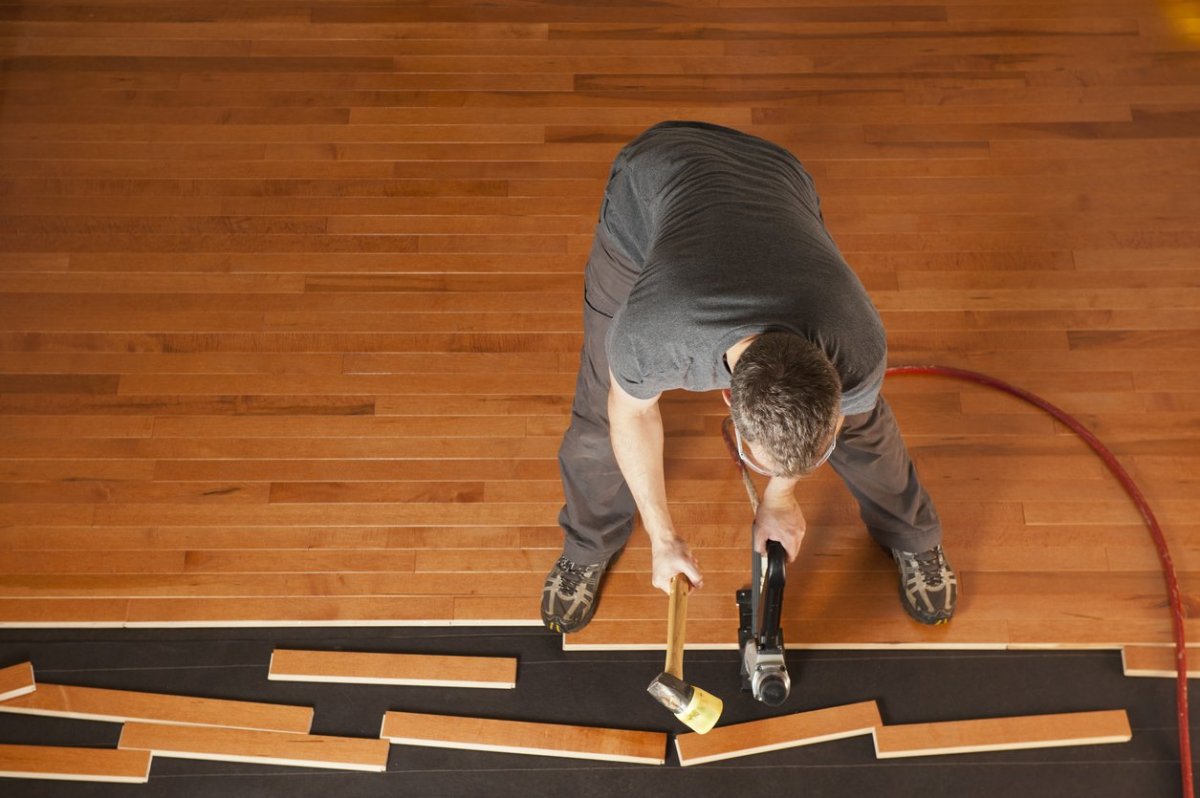We may earn revenue from the products available on this page and participate in affiliate programs. Learn More ›
The to-do lists are long in a home renovation—and that’s before you account for unexpected tasks like running to the store to pick up a new size of fasteners or redoing a splotchy paint job. So, when it comes to installing solid or engineered wood planks for new floors, I choose prefinished hardwood floors to simplify the installation, color application, and sealing into one step among numerous other reasons. Some pros may disagree. To decide what will work best in your home, first get to know what separates the two options with these key points in the case of prefinished vs. unfinished hardwood flooring.
You can walk on your new prefinished floor immediately.
With flooring that is finished on-site using oil-based polyurethane, the homeowner must wait days, sometimes even weeks, before moving furniture back into the room. Even though the floor may be dry to the touch, it will be vulnerable to scraping until the waiting time has elapsed and the finish has fully cured. I once had to shuffle around in socks and remain furniture-less for four weeks after applying three coats of poly to a floor. (Waterborne polyurethane finishes dry to touch quickly but can have varying cure times—some quite long.)

Carpet, hardwood, tile, vinyl, and laminate flooring.
Bob Vila has partnered with Empire Today® to help you easily get beautiful new floors at a great price.
Free In-Home Estimates
Prefinished floors have fewer VOCs to affect your family’s health.
For days after applying an oil-based polyurethane, you will smell and breathe in vapors from polyurethane resins and solvents. Volatile organic compounds (VOCs) have been shown to be carcinogenic, and some waterborne polyurethanes produce them, too. Why not buy prefinished so that the curing takes place in a factory, not in your living room?
No worries about dust with prefinished flooring.
Dust and errant hairs are the enemy of on-site floor finishing, often caught as the stain goes down. But these annoyances won’t have any effect on your new prefinished flooring. You will, however, need to take measures to protect prefinished floors if you have contractors tromping around with tools and equipment en route to other jobs around the house.
Installation of prefinished flooring can be done in one session.
There’s no necessity of staying home to complete the various stages of an on-site finishing job—sanding, sealing, staining, applying polyurethane, and so on. A crew of two had our 300-square-foot solid wood floor installed, with underlayment, in only about two hours.

Factory-applied finishes are nearly flawless
Not only are they better than what homeowners or contractors can apply on-site, but these factory-applied finishes are also incredibly durable and often come with a lifetime warranty. The Mullican red oak flooring, shown above, will stay new-looking for longer. It came with a PPG UV-cured resin and nanoparticle coating that is highly scratch- and abrasion-resistant. I can’t even scratch it with my fingernails.
RELATED: 19 Affordable Options for Beautiful Hardwood Flooring
Prefinished floors come at a lower cost.
Prefinished solid wood floors initially cost more than unfinished wood flooring—about $2 per square foot for a good grade of red oak. But once you factor in finishing costs, prefinished ends up being less expensive.

Okay, you’ve heard my arguments. But some homeowners and many contractors disagree with me and prefer site-finishing wood floors for the following reasons.
Unfinished floors are preferred when the space is under construction or large renovation.
Many contractors prefer to wait until the end of the job to finish the floor. That way, a dropped tool or a mortar pebble under a work boot can’t mar the finished floor—and ruin customer relations.
Starting with unfinished flooring offers a greater choice of finishes.
There is no question that the site-finished route opens up a greater variety of choices with respect to color and shade. Prefinished products, however, come in more species and stains than ever before.

Unlike prefinished floorboards, unfinished boards have no bevels.
Prefinished floorboards usually have micro-bevels on all edges. These bevels hide slight discrepancies between board depths and widths. Inevitably, some homeowners will prefer the flush look of site-sanded floors, as they feature no such grooves and can be finished to a mirror-like surface.
What’s your preference? Perhaps the hassles of site-finishing will be worth it to you—for one or all of the reasons above. But for homeowners like me, prefinished floors are the future.

